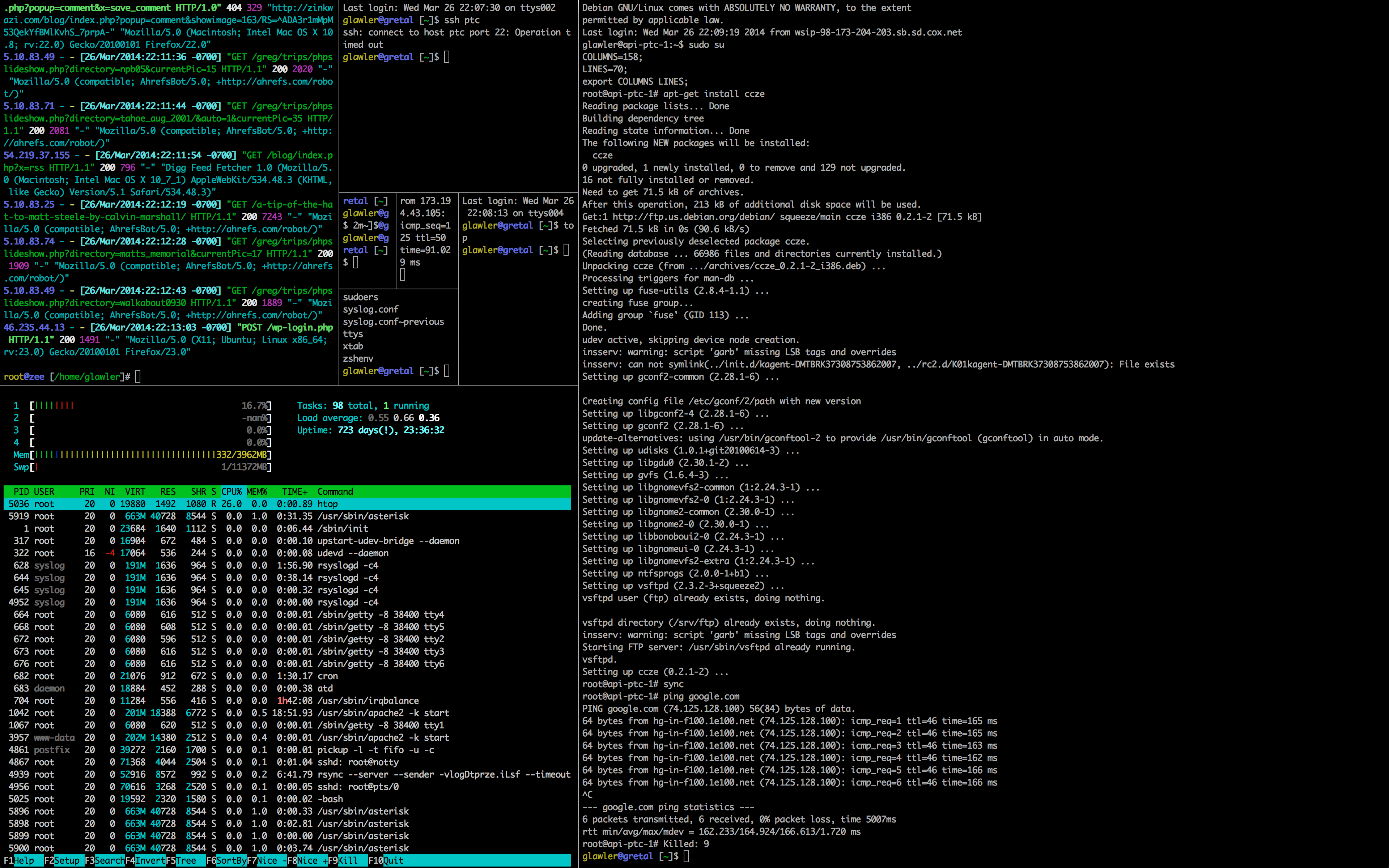

You can also use this opportunity to give it a name, which will show up in the tab title. Right click on each shell and choose "Edit Session"Ĭhoose your profile corresponding to this shell. Assign the correct profiles to the correct shells.For example, you might name your profile "Work Main Directory" that just contains the startup command cd ~/mywork-folder. Repeat this for every shell you want to have a custom command or custom working directory. This may have gotten better in later versions. I've found that sometimes iTerm will run the "send text at start" before it opens that directory though. You can also use the "directory" radio button, and not use the cd A do B syntax. It's better to use between commands instead of & so that if any command fails, the rest still get executed. For example you might type cd ~/my-work-folder npm run watch, which is what's executed in this shell. Under "Send text at start" type the commands, including cd to the correct starting directory, for this shell to execute on startup. Open preferences with ⌘-, (Command-Comma)Ĭreate a new profile and name it something specific to this arrangement and shell, like "Work Build Process" This is complicated and has several steps. ⌘-D and ⌘-Shift–D are useful shortcuts for creating vertical and horizontal splits.

Just set up the layout of splits and tabs. Open a new window and set up your tab and split layout as desired.ĭon't run any processes, nor cd into any directories yet. Any windows open in the background will also be saved. We'll use the "Save Window Arrangement" feature which saves all windows. How to Create a Custom Window Arrangement I've attempted to document known pitfalls. ITerm2 is useful software, but this process is complicated. Screenshot of the "Restore Window Arrangement" iTerm2 shortcut The problem is remembering all of them.All posts tech nutrition growth How to Create Custom iTerm2 Window Arrangementsīy following these steps, we'll learn how to create a custom keyboard shortcut to automatically spawn a set of windows and splits with processes running.

Learning shortcut keys for any application can move you to a power user level and improve your productivity a lot. These are the shortcut keys I use daily with iTerm. Go Right One Word ⌥→ (send escape sequence f) Conclusion Go Left One Word ⌥← (send escape sequence b) It uses the ⌘←Delete as keyboard shortcut and sends the 0x1B 0x08 hex code (action). One shortcut key I find useful is deleting the last word. You can change global shortcut keys from profile preferences Keys tab. Make Text Smaller ⌘- Custom shortcuts keys If you're making a presentation, recording screen cast or your eyes are tired shortcut keys for changing font size solves that problem. For that reason it's rare to change the font size. The iTerm on my machine is configured to my liking and works for almost all the use cases. They do come in handy from time to time when you need to do something with the output which is in terminal. The following shortcut keys are not used that often (sometimes due to failing personal memory). Select Pane Right ⌥⌘→ Interacting with the terminal Most of the time I can't remember the shortcut keys for it, previous/next pane works great, rarely have more than 2 panes at the time. You can also move between panes directionally. For that problem the shortcut keys to move between the panes solve it. Your performance would suffer a lot if you had to use the mouse to use any of those terminals. Split Horizontally with Current Profile ⇧⌘D You can go crazy with splitting the current tab (if you need to)! The splitting the tab shortcut keys are the lifesaver in those moments. Opening a new tab takes care of the most use cases, but sometimes there's a need to see multiple terminals at the same time. Move Tab Left ⇧⌘← Working with multiple terminals in same tab You could move the tabs around using the following shortcut keys, but I rarely use them. Following shortcuts allow me to open new terminals, move between them, close once I'm done with it. And sometimes you just need to try something fast and close it. Sometimes even if I'm not using something at the moment (or in the last few days / weeks) the terminal windows are left as is (often to avoid going to the needed directory). It's rare occasion having only one terminal open as often I'm working with multiple projects / tools at the same time. Once you learn a few shortcut keys and develop your personal work flow you would hardly want to leave that black (differs) window.īelow is some of the shortcut keys I use. It's a great terminal application and it would be hard to imagine my days without it. If you use Mac OSX and do a lot of work in terminal the iTerm application will become your friend fast.


 0 kommentar(er)
0 kommentar(er)
